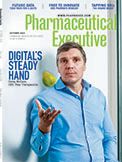Data Shape-Up: Striving to Standardize
Pharmaceutical Executive
With a growing abundance of clinical and health information now available and achievable, the need for industry to apply common structures and rules to interpret and act on this data is critical.
Amid the steady but certain rise of digital healthcare, shedding some of the “old ways of doing things” in the pharmaceutical industry will remain a challenging exercise, perhaps no more apparent than in the areas of data sharing, integration, and standardization. When it comes to the practice of drug development in particular, the historic lack of these three components has long resulted in siloed R&D models typically characterized by companies rolling out their own individual formats for specific functions (e.g., clinical trials, postmarketing safety reporting). This reality continues to vex industry data experts, but they’re sure of one thing-it needs to change.
Wayne Kubick, chief technology officer for Health Level Seven International (HL7), a non-profit, American National Standards Institute (ANSI)-accredited standards developing organization, argues that in today’s complex operating environment for clinical data-with a growing abundance of information and technology
Wayne Kubick

now available and achievable, from genomics and proteomics to imaging and case- and patient-reporting data-the need to apply an holistic view of all this evidence is paramount. The ability to aggregate these data types, and enhance their potential through capabilities such as data mining, analytics, and AI, can help make more informed decisions and gain deeper insights on product development and innovation. But the only chance at accomplishing this, Kubick says, is for industry to apply common structures, terminologies, and rules that will allow data from different systems, sources, and participants to be organized, represented, and interpreted in similar ways.
“I look at it from getting the data right in the first place,” says Kubick. “Once you standardize the data, you can not only make it more accessible and aggregatable, but you can also begin to systematically attack the problem of data quality and integrity. That’s hard to do now, and it’s becoming more urgent, particularly as we’ve had more instances of data being fabricated or manipulated. It all starts with getting data that’s in a reusable format, and finding better ways to deal with data anomalies. You’ve got to make the data ready for use to be able to support these more advanced types of uses that we were never able to do before.”
Culture chasm
While acknowledging some strides in breaking down data silos, Kubick stresses that true evolution will require a cultural change within pharma companies and among pharma scientists often bound to the belief that research can’t effectively utilize health data. “[Pharma] are part of healthcare, they have to recognize that,” says Kubick, pointing also to recent remarks made by Janet Woodcock, director of FDA’s Center for Drug Evaluation and Research (CDER), about this disconnect, where she called for major reforms in scientists’ relationships with regulators, physicians, and each other.1 “It’s the attitude that, wait, you need to look at yourselves within the context of the broader world of digital healthcare and learn how to play nice and leverage what’s going on, but also accept the fact you have an obligation to share your data.”
Embracing that duty has been a long road in pharma. Kubick remembers a time when statisticians would routinely hide data from the clinicians because they felt they couldn’t be trusted to understand and interpret the

data. While efforts such as the implementation of standards by the Clinical Data Interchange Standards Consortium (CDISC), where Kubick was formerly chief technology officer and a founding board member, have helped chip away at these ingrained habits, trust remains an issue, he says. There are concerns over the validity of clinical assertions made from health system sources such as real-world evidence (RWE), lending to further hesitation to shift away from the proven but “artificial” world of the randomized controlled trial (RCT).
“We train ourselves with SOPs and just the threat of regulatory consequences if you don’t toe the line and do things exactly the same way, rather than looking for new ways to do things that will accomplish the greater goal,” says Kubick. “You have these cultural impediments that are deeply embedded within the organization around the custodianship of the data and the job of protection.”
A tipping point?
Moving forward, however, with FDA and others emphasizing the need to repurpose real-world data (RWD) for pharmaceutical practices and to support drug development and expose things that may not be visible in a clinical trial, Kubick believes this regulatory push, more so than anything, will begin to drive change in pharma research, regulatory, and safety management processes. While FDA is still building out some of its own learnings, in May, the agency did release draft guidance to help sponsors who are using RWD and RWE as part of regulatory submissions provide the information in a simple, uniform format.2 Congress advocated for wider application of RWE in the 21st Century Cures Act, passed in late 2016.
The advent of precision medicine has also sparked holistic-view pursuits in health. One example is the All of Us Research Program, funded by the National Institutes of Health (NIH). The initiative is attempting to collect the genetic and health data of one million volunteers, with the goal of accelerating medical breakthroughs and enabling individualized prevention. Data on demographics, lifestyle, environment, and social determinants of health are being gathered, as well as genomic samples from select participants. Volunteers can choose to give researchers access to their electronic health records (EHRs).
Additional efforts in these areas include using claims data in pharmacoepidemiology; the OMOP Common Data Model, which allows for the systematic analysis of disparate observational databases; the emergence of HL7’s Fast Healthcare Interoperability Resources (FHIR), a standard for electronic exchange from multiple types of EHR and payer systems; and other research systems from academia and industry. “There’s starting to be more commonality in terms of organizing the data available in healthcare,” says Kubick. “My belief is that the efforts within the healthcare environment to make data more usable, aggregatable, and mergeable offers opportunities for the pharmaceutical industry to capitalize on gaining more out of that direct, original source data.”
Companies, however, will likely do so cautiously, with many expressing the need for rigorous data assessment and setting of standards for use of RWE, for instance, and the importance of understanding the accuracy, quality, and availability of the underlying data and technology as they begin influencing treatment decisions.3
Keep source close
Learning how to harness data closer to the point it originates-much like what the high-tech, communications, finance, and other industries do-is key, says Kubick. For drug developers and their study partners, that means coming up with ways to minimize the constant mapping of data that occurs over the process of going from source to analysis.
“At most, there should be one map-a source to analytical format,” says Kubick. “Not to go from original source, to one internal database, to another internal database, to some sort of intermediate format, to some sort of analytical format.”
Standardizing terminology is another piece of the puzzle; healthcare and research both use a lot of terminologies-and they’re different from each other. While there are coding systems such as the World Health Organization’s ICD-10 and ICD-11 for classifying diseases (the latter, released last year, is the first that’s completely electronic), getting organizations, countries, or industries to use common terminologies remains a major challenge. For example, even if companies are using a standard data structure with the same standard terminologies, individual business practices and rules may dictate how they apply the terminologies, resulting in variations of use. This, Kubick says, represents another key link in this new process chain-make the data digital and fairly standardized, work on the quality issues, and then eventually try to improve the uses of data through more consistent, common terminology.
“Drug companies are looking more at actually contributing to the improvement of public health as their goal now, rather than just process,” he says. “It’s an opportunity in the sense that it’s a way for the industry to improve its relationship with doctors and all of us patients as end users of healthcare.”
Michael Christel is Pharm Exec’s Managing Editor. He can be reached at mchristel@mmhgroup.com
References
1. “‘It’s Not working’: An FDA Insider’s View of Where Medical Innovation Falls Short,”LA Times, Sept. 7, 2019.
2. Submitting Documents Using Real-World Data and Real-World Evidence to FDA for Drugs and Biologics, Guidance for Industry, https://www.fda.gov/media/124795/download
3. Tina Hernandez, et al., “Real-World Evidence in Cardiovascular Medicine: Assuring Data Validity in Electronic Health Record-based Studies,” Journal of the American Medical Informatics Association, Aug. 12, 2019.

Addressing Disparities in Psoriasis Trials: Takeda's Strategies for Inclusivity in Clinical Research
April 14th 2025LaShell Robinson, Head of Global Feasibility and Trial Equity at Takeda, speaks about the company's strategies to engage patients in underrepresented populations in its phase III psoriasis trials.
Odylia Rare Disease Day Event Highlights Challenges in R&D for Orphan Drugs
April 14th 2025Odylia Therapeutics event brings together leaders across biotech, pharma, venture capital, patient advocacy, and research sectors to address the financial and structural barriers that impede rare disease drug development.